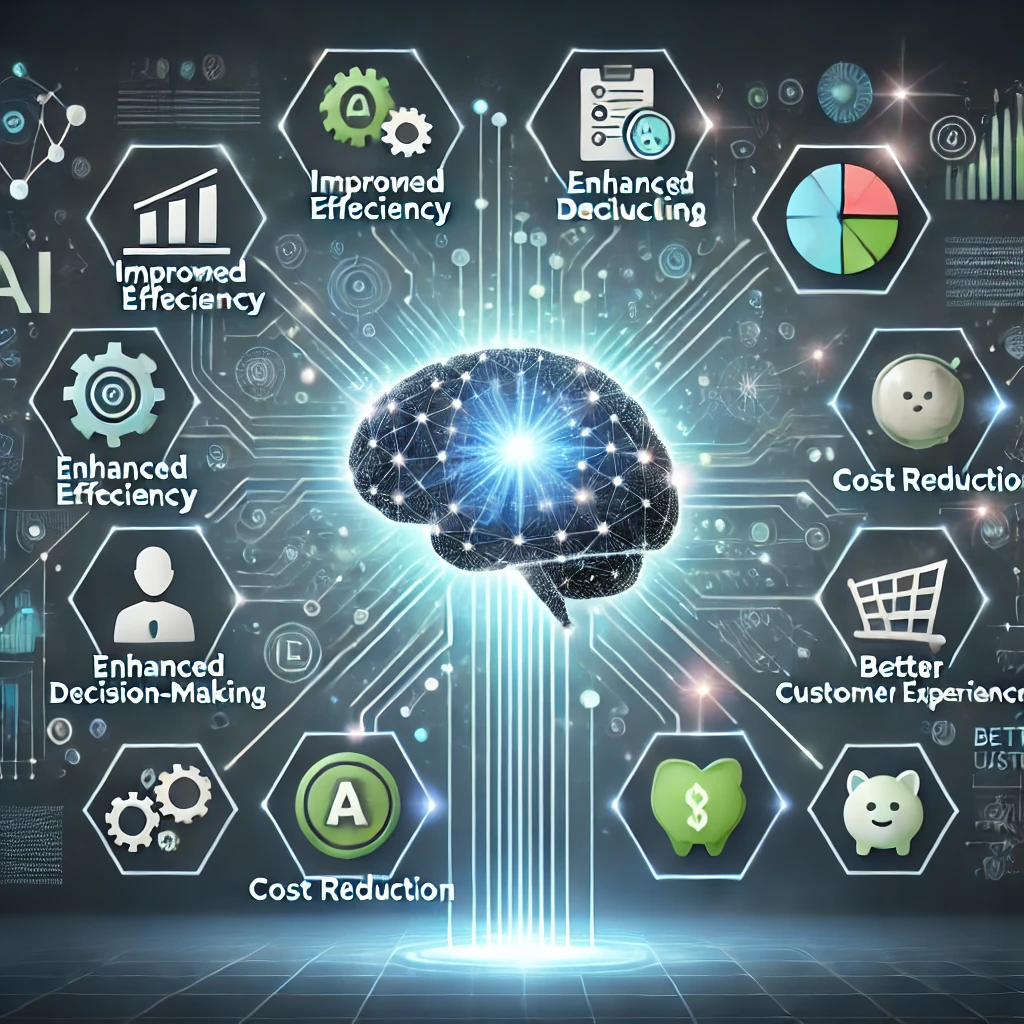Artificial Intelligence (AI) Integration
What is AI Integration?
Artificial Intelligence (AI) integration refers to the seamless incorporation of AI technologies into existing systems, processes, and workflows to improve efficiency, decision-making, and innovation. It’s more than just adopting AI tools; it’s about embedding intelligent solutions into every aspect of an organization’s operations.
Importance of AI in Modern Industries
AI integration has become a game-changer for industries across the board. From automating mundane tasks to driving transformative insights, AI has unlocked possibilities that were previously unthinkable. The potential to improve operations, predict trends, and personalize user experiences makes AI essential in today’s digital age.
Overview of AI’s Potential
AI can mimic human intelligence, offering capabilities such as natural language processing, image recognition, and predictive analytics. When integrated effectively, AI can redefine how businesses operate, solve complex problems, and open new avenues for growth.
. Understanding AI Integration
Definition and Purpose
AI integration involves embedding AI systems into organizational workflows to enhance performance and solve specific challenges. The purpose is to optimize processes, reduce manual intervention, and enable smarter decision-making.
Key Components of AI Systems
- Machine Learning (ML): Enables systems to learn from data and improve over time.
- Natural Language Processing (NLP): Facilitates interaction with humans using language.
- Computer Vision: Empowers machines to interpret visual information.
- Robotics: Assists in automating physical tasks.
- Deep Learning: Mimics the human brain to recognize patterns and make decisions.
Types of AI Used for Integration
- Weak AI: Specializes in specific tasks (e.g., chatbots).
- Strong AI: Capable of understanding and learning any intellectual task.
- General AI: Hypothetical AI that can perform human-like reasoning.
. Industries Revolutionized by AI Integration
AI in Healthcare
AI has brought breakthroughs in healthcare by enabling faster diagnostics, predictive analytics, and personalized medicine. For instance, AI-driven tools can identify diseases through medical imaging with remarkable accuracy, saving lives through early detection.
AI in Education
Education has benefited immensely from AI integration, especially with tools like adaptive learning platforms that tailor content to individual student needs. AI-powered grading systems and chatbots for student queries are making education more accessible and efficient.
AI in Retail and E-Commerce
From personalized product recommendations to inventory management, AI is reshaping retail. Retailers use AI to analyze customer behavior, predict purchasing trends, and enhance the overall shopping experience.
AI in Finance and Banking
AI integration in finance helps detect fraudulent transactions, automate trading, and offer personalized financial advice. Chatbots and virtual assistants streamline customer support, improving satisfaction.
AI in Transportation and Logistics
Autonomous vehicles and route optimization algorithms are just the tip of the iceberg. AI integration ensures timely deliveries, cost-effective logistics, and improved safety in transportation.
. Benefits of AI Integration

Enhanced Efficiency and Productivity
AI reduces human errors and automates repetitive tasks, allowing employees to focus on more strategic work. For example, automated systems in manufacturing can operate 24/7 without fatigue.
Improved Decision-Making Capabilities
AI systems process large amounts of data quickly and accurately, providing actionable insights. This supports managers and leaders in making informed decisions backed by data.
Cost Reduction and Scalability
Although the initial investment in AI integration might be high, the long-term cost savings are significant. AI solutions scale seamlessly as businesses grow, ensuring consistent performance without proportional resource expansion.
Enhanced User Experience
Personalized interactions powered by AI improve customer satisfaction. Chatbots, for instance, provide immediate responses and can handle multiple customer queries simultaneously.
. Challenges in AI Integration
Data Privacy Concerns
AI relies heavily on data, which raises issues around data security and user privacy. Organizations must comply with regulations like GDPR and invest in robust cybersecurity measures.
High Implementation Costs
Implementing AI can be expensive, particularly for small businesses. Costs include not just the technology but also training employees and maintaining systems.
Skill Gap in Workforce
AI integration demands specialized skills that many employees may lack. Upskilling and reskilling programs are essential to bridge this gap.
Ethical Considerations
Questions about AI’s impact on employment and its potential biases create ethical dilemmas. Businesses must prioritize transparency and ethical AI practices.
. Best Practices for Successful AI Integration
Establish Clear Objectives
Before diving into AI integration, organizations must define their goals. Are you aiming to enhance customer experience, reduce costs, or improve decision-making? Clear objectives ensure that AI implementation aligns with business needs and delivers measurable results.
Invest in Quality Data
AI thrives on data, and the quality of data directly impacts the outcomes. Businesses should focus on gathering clean, relevant, and unbiased datasets. Data preprocessing, such as cleaning and normalizing, is a critical step in ensuring AI systems operate effectively.
Foster Cross-Departmental Collaboration
AI integration isn’t just the IT department’s responsibility. It requires input from various departments to ensure it meets diverse needs. Marketing teams can provide customer insights, while finance teams can highlight areas needing optimization.
Regularly Update And Maintain AI Systems
AI technologies evolve rapidly. Regular updates are crucial to ensure systems remain effective and secure. Maintenance also involves monitoring AI’s performance, correcting errors, and adapting it to changing business requirements.
. Tools and Platforms for AI Integration
Popular AI Frameworks and Tools
Several frameworks make AI integration simpler and more efficient:
- TensorFlow: A versatile framework for machine learning and AI.
- PyTorch: Known for its ease of use in research and deployment.
- Keras: Ideal for rapid prototyping and testing.
Cloud-Based AI Solutions
Cloud platforms offer scalable AI services, eliminating the need for expensive hardware:
- Google AI Platform: Provides tools for building, training, and deploying ML models.
- Microsoft Azure AI: Offers pre-built models and custom AI solutions.
- Amazon SageMaker: Simplifies building and managing ML workflows.
Open-Source AI Software
Open-source tools are cost-effective and customizable, making them a popular choice:
- Scikit-learn: Best for classical ML algorithms.
- H2O.ai: Designed for business applications with a user-friendly interface.
. Role of Data in AI Integration
Importance of Data Quality
AI’s accuracy hinges on the quality of the data it processes. Incomplete or erroneous data can lead to flawed decisions and insights. Businesses must prioritize data quality by ensuring accuracy, consistency, and relevance.
Data Processing and Analysis
Raw data is often unstructured and requires processing before AI can use it. Techniques such as data normalization, feature extraction, and noise removal are essential steps in this process.
Addressing Data Biases
AI systems can inherit biases present in the training data, leading to unfair outcomes. For instance, biased hiring algorithms can perpetuate gender or racial disparities. Organizations should audit datasets and implement bias detection tools to minimize these risks.
. AI Integration in Marketing Strategies
Personalized Customer Experiences
AI enables hyper-personalization, where marketing strategies are tailored to individual customer preferences. Recommendation engines, like those used by Netflix and Amazon, are prime examples of AI’s ability to enhance user experiences.
Automation of Repetitive Tasks
AI automates mundane tasks, freeing up time for creative and strategic work. For example, email marketing campaigns can be automated and personalized using AI, resulting in higher engagement rates.
Predictive Analytics for Customer Behavior
AI analyzes historical data to predict future customer behavior. This helps marketers target potential customers more effectively and optimize campaigns for better ROI.
. The Future of AI Integration
Emerging Trends in AI Technology
- Edge AI: AI processing on local devices for real-time decision-making.
- Generative AI: Creating content, such as images and text, through advanced algorithms.
- Explainable AI (XAI): Enhancing transparency in AI systems.
AI’s Role in Shaping Future Industries
AI will continue to disrupt industries by enabling autonomous systems, smarter decision-making, and more personalized services. Sectors like healthcare and education are poised to see transformative changes.
Predictions for AI Advancements
- Greater adoption of AI in small businesses.
- Improved human-AI collaboration through augmented intelligence.
- More stringent regulations governing AI are used to ensure ethical practices.
. Conclusion
AI integration is not just a trend; it’s a necessity for businesses aiming to thrive in the digital era. From automating processes to delivering unparalleled insights, AI is reshaping industries and driving innovation. However, the journey to successful AI integration requires careful planning, collaboration, and a commitment to ethical practices. By embracing AI thoughtfully, organizations can unlock its immense potential and stay ahead in a competitive landscape.
. FAQs
1. What is AI integration, and why is it important?
AI integration involves embedding AI technologies into systems and processes to improve efficiency, productivity, and decision-making. It’s crucial for businesses seeking to innovate and stay competitive.
2. How does AI integration impact data privacy?
AI relies heavily on data, which can raise privacy concerns. Organizations must comply with data protection laws, such as GDPR, and invest in secure systems to mitigate risks.
3. Can small businesses afford AI integration?
Yes, many affordable AI tools and platforms cater specifically to small businesses. Open-source software and cloud-based solutions are cost-effective options.
4. What are the ethical considerations in AI integration?
Ethical issues include data bias, job displacement, and privacy concerns. Transparent practices and adherence to ethical guidelines are essential to address these challenges.
5. How will AI integration evolve in the next decade?
AI is expected to become more accessible, with advancements in edge computing, generative AI, and augmented intelligence. It will continue to revolutionize industries and improve human-AI collaboration.


